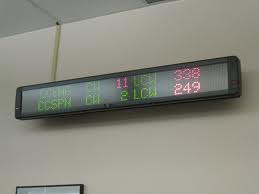 Inspiring or Uninspiring? -It all starts with the strategy…
Inspiring or Uninspiring? -It all starts with the strategy…
On each client engagement, regardless of type (Business Planning, Assessments, Turnarounds, Process Improvement, etc.), we invariably find ourselves working extensively with what I call the company’s or business unit’s Strategic Performance Framework (i.e., the specific goals, objectives, and KPIs of the area in focus). That is because these three critical elements serve as the foundation for everything that follows. It essentially answers the proverbial question “For the sake of what? (FSOW?). FSOW are we making this or that investment? FSOW are we developing a new product? FSOW are we consuming resources to improve a specific business process? FSOW are we changing our organization chart (again…)?
Without a thorough analysis and understanding of goals, objectives, and KPIs, any plan that is developed will simply be a formalized road map for throwing darts at a wall. Goals and objectives tell us the destination. KPIs give us continuous feedback as to whether or not we’re on course for our journey, or if deviations from plan are occurring.
This shouldn’t be new to many of us, as any manager worth his salt understands the basics of strategic thinking and performance management. Yet, when we step back and look at the organization or business unit in total, it’s not unusual to observe some big “cracks” in the foundation. And often it is often the KPI’s and metrics that are the first indication that the strategic underpinnings of the business unit are starting to get shaky.
Strategies vary…and so should KPIs…
Working with as many organizations as I do, you would naturally expect the destinations of each client to be different. Take “customer contact” organizations, for example, where there are clearly a myriad of contributions that the organization can be set up to achieve — providing purely reactive service, converting leads, driving participation in customer programs, increasing market share, retaining customers, building loyalty… the list goes on. And most often, these goals and objectives do, in fact, differ from company to company (although there is a growing tendency among managers to “follow the pack” where goals and objectives are becoming more about “maintaining the course” than about providing new and inspiring destinations — a subject for another day!)
But despite the wide array of strategies we expect, and often see, we still find that nearly every customer service organization focuses on the same operating metrics. Back to the Call Center for a moment, here’s a list I can almost guarantee that EVERY company focuses on.
- Speed of Answer/Service Level
- Abandon Rate
- Call Queue Length
- Average Handle Time
- Agent Satisfaction
- Agent Availability/Productivity
No matter how different the objectives are for the Customer Service channels, the measurements (the things the reps care most about since they influence everything from raises to career progression) remain the same. Don’t believe it? Next time you see your call center manager at the coffee machine, ask them what the top three measures of success are for their group. Try the same question with the reps themselves.
How can that be? Dramatically different destinations, yet metrics that tell you little about progress toward the destination, assuming your mission is something other than churning calls, tasks, and shifts.
Are you “de-motivating” your workforce?
This is clearly a sad state of affairs, because it not only tells us how disconnected our day-to-day activities are from our strategy (read PURPOSE), but really exemplifies how intellectually lazy our strategic planning processes have become. Assuming the organization has developed a compelling and inspiring purpose (which many have, but most still lack), very few have a set of KPIs that track with it. Worse yet, most of these KPIs (the ones above that have been measured for decades) scream for more clarity, consistency, and targets based on something other than “finger in the wind” aspirations or the “annual 5% improvement.”
And as these KPIs trickle down into the organization, their relevancy begins to wane exponentially. What can a call center manager or rep do from one day to the next to drive an outcome like average service level? Sure, there are long term strategies to “course correct” when negative trends emerge (better forecasting of workload, more flexible staffing strategies, etc.), but what about day-to-day behavior? Most often, this is left to the intuitive feel of the operating manager and their motivational style, which can affect consistency and effectiveness over time. Even if you end up measuring things that are “conventional” or somewhat dated, failing to link these in some coherent and causal manner to the organization’s broader goals will undoubtedly elicit the proverbial yawn…that is assuming they haven’t already dismissed the metrics as irrelevant.
Waking up your strategies and KPIs…
So here are my five tips for “waking up” your customer metrics:
- Make sure they are built on the foundation of a compelling and clearly articulated strategy. If your strategy doesn’t get you out of bed energized every morning, you’ve got more work to do. Resist the temptation for that “follow the pack” 3-5% improvement gain from last year. What is it your business unit is really there to accomplish? Think business outcomes (sales, leads, changes in customer disposition, etc…) rather than operational activities (calls answered, transaction speed, etc…)
- Line up your tactical objectives to your strategic purpose. If your goal is, say, to improve customer loyalty, then your objectives should revolve around the known drivers of loyalty. And avoid the “circular answer” to these questions. An objective for attaining loyalty is NOT to improve transaction satisfaction, but more likely, to eliminate the need for the transaction in the first place.
- Develop relevant, clearly understood, customer-centric KPIs. Should you really be measuring, “average service level”, or should you be measuring the number of times a call exceeds 20 minutes, or the number/percent of calls that get dropped prior to resolution, etc. I’d submit these are bigger drivers of loyalty and dissatisfaction than, say, average queue lengths or duration of after-call work. Think one or two levels beyond what you’re currently measuring. Think drivers versus macro results. If you’re on a journey from New York to California, a measure like service level is akin to telling you what state you’re in when it would be more helpful to know when you go off course by x%.
- Make metrics relevant at the department level AND the work face — the best metrics are those that can be discussed and improved at any level in the organization. If your objective is to eliminate a particular source of dissatisfaction, then declare what that driver is and measure it at every level across the business. Get the organization talking in the same language and counting things the same way, and you’ll be tracking a lot closer to your desired outcome.
Having a set of metrics for the sake of measuring things is not only a waste of time, but can be a real distraction to achieving your desired outcomes as a business. If your mission, goals and objectives have been declared in a clear and compelling manner, then do yourself a favor and spend some time making sure your metrics will guide you toward that outcome.
-b
Author: Bob Champagne is Managing Partner of onVector Consulting Group, a privately held international management consulting organization specializing in the design and deployment of Performance Management tools, systems, and solutions. Bob has over 25 years of Performance Management experience and has consulted with hundreds of companies across numerous industries and geographies. Bob can be contacted at bob.champagne@onvectorconsulting.com




Bob – I always enjoy reading your posts and mostly find I agree with them. I wrote several posts discussing metrics and organizational objectives (http://www.haimtoeg.com/?p=35 for example, using the same road trip metaphor used here). One of the things I try to do is avoid using the term “KPI” – It became synonymous with metric, losing the fact that it is “key” to something.
To overcome that, I try to think of metrics in two groups, those you manage to and those that you monitor. The first is determined by strategy and operational objectives, the second contains everything else that indicates the health of your operation but is not necessarily associated with your objectives. Borrowing from the road trip example, if your engine maintains its temperature it has no influence on your trip, but if it overheats it will surely spoil your day.
Yawn? It is actually worse than that, Bob. It makes me want to call the BBB or a lawyer to see if they can be sued for malpractice.
Here is a novel metric: Let’s measure the % of time agents do what they are supposed to do, by call type. Customers call us for many reasons…to activate a phone, to replace a credit card, to order cable services or we call them to upsell them or collect money. There are certain things that are supposed to be said to customers and done in desktop systems on those calls…those things are, in part, what make it a good call for the customer and a good call for the company.
There are two struthious reasons why few centers have this metric at all let alone accompanied by a drill-down by call type. The first is that for most centers, it is a hard measure to gather. You have to dedicate speech analytics programming or you have to dedicate monitors to sampling calls and listening to see if the required call components are there and you have to do it regularly to see if progress is being made. Instead they make a dashboard of what is easy to measure. In so doing, they are like the drunk looking for his keys under a street lamp, even though that is not where he lost them, because “the light is better here.”
The second reason is actually a bit more insidious. They don’t measure it because they have unplugged the smoke alarms. They know it is a problem but they don’t measure it because they don’t know how to fix it. They have tried monitoring and coaching but they can’t move the needle. What they may or may not realize is monitoring and coaching can not fix process variation, but they do know that they don’t know what else to do.
Until we measure whether we are doing what we are supposed to do on each call and taking steps to reduce the inevitable between agent variation in process and outputs we really are way beyond boring. We are failing our employees, who want to do the right thing, we are failing our customers who expect us to know what we are doing, and we are failing our shareholders by leaving revenue on the table (eg, failing to upsell), increasing costs (eg, callbacks), and putting the company at risk (eg, failing to give required disclosures). If interested, you can read more in this isixsigma.com article: http://www.isixsigma.com/index.php?option=com_k2&view=item&id=1567:fixing-between-agent-variation-can-make-all-the-difference&Itemid=223
Sincerely,
Dennis Adsit
Great points. I think that metrics suffer when they don’t tie back to the overall strategy. I also think that metrics of any type suffer when we get into the incremental gain game. So, two things that we can do to move beyond? talk to customers to see if we’re measuring the right things from their perspective and invent a new future – how can we come up with some wild gains (even if we don’t publish them internally).